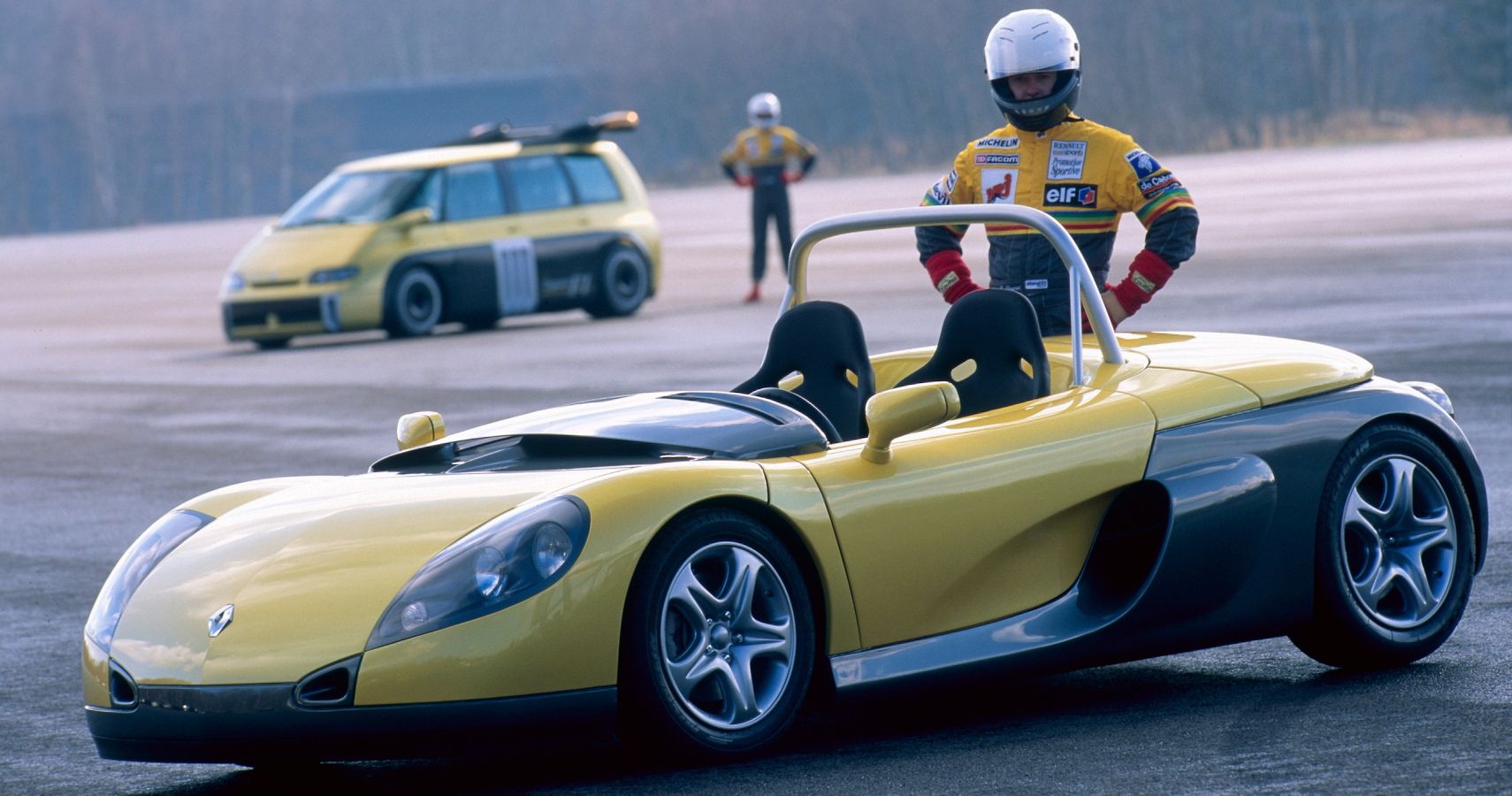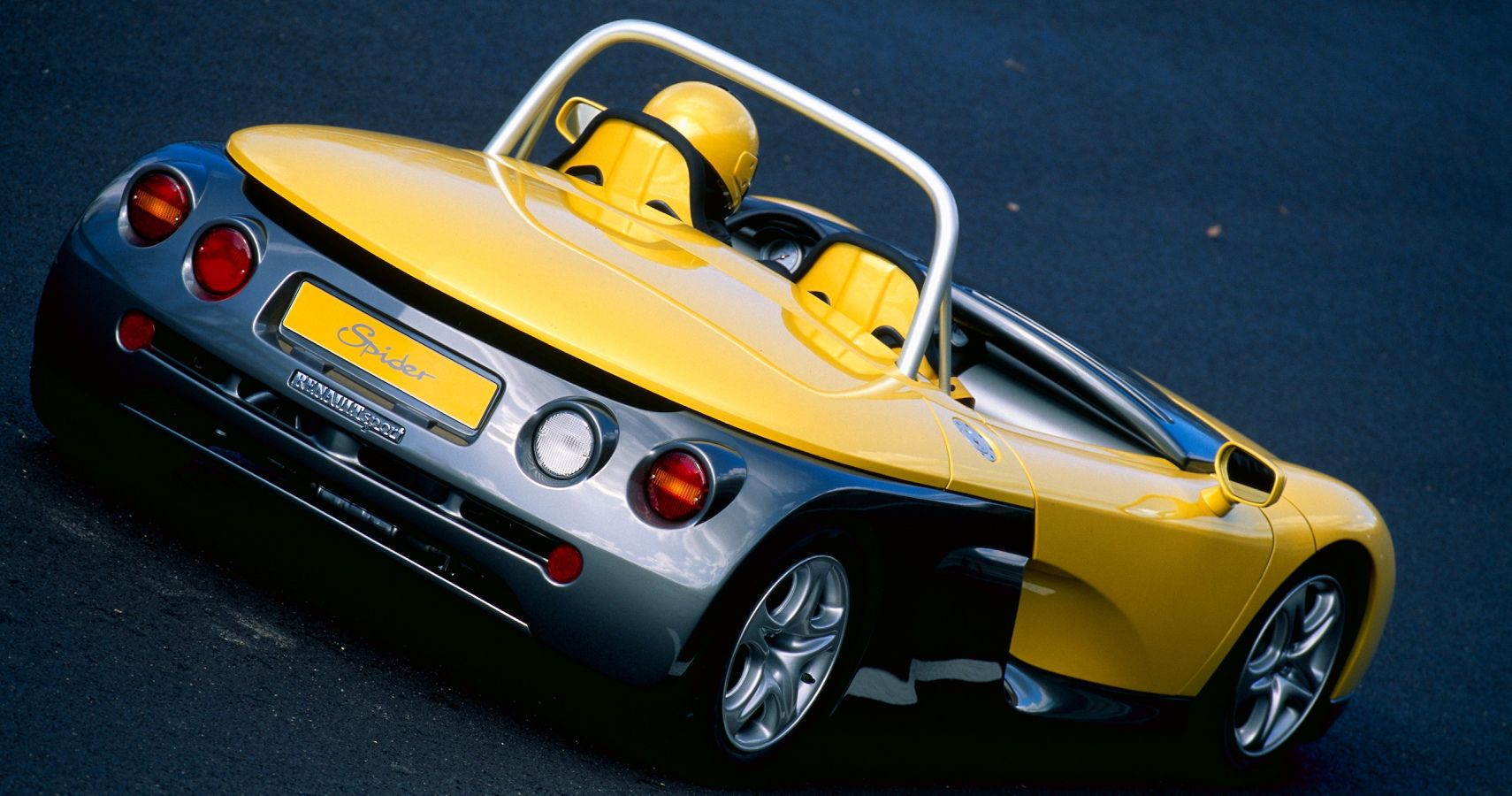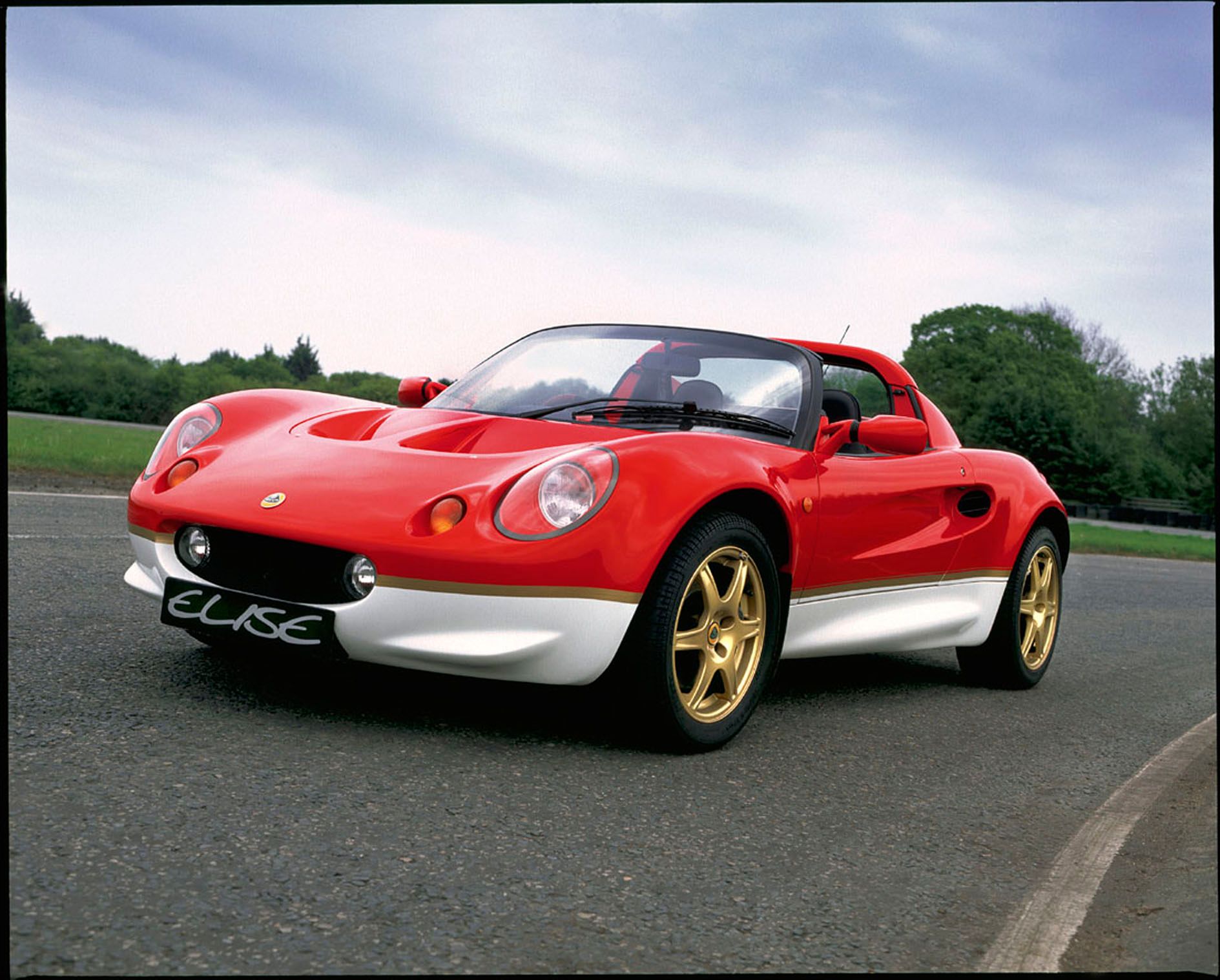The Renault Sport Spider is a vehicle born during a time when the automotive industry was in the midst of a very different era when it came to sports car design as it is today. For decades, performance vehicles had a very different ethos to today's power hungry, road roasting rockets.
Back in the 20th century, manufacturers did their upmost to keep the weight in their sports cars down, enabling the cars to go fast despite having minimal power. In fact, the likes of the Lotus Elise and Mazda Miata emerged out of a desire to stick to the road rather than a fear of falling off it.
When Renault Sport unveiled its Spider as a concept at Geneva in 1995, it took the push for weight loss to a whole new level. Dropping basic features such as a roof, windshield, and even a heater, very few people believed the car would make it to production. They were wrong though as not one year later, the stripped back model was hitting dealership forecourts.
With such a recognizable shape and interesting history to boot, it may come as a surprise that the general car community doesn't appreciate the Renault Sport Spider more than it does. Though, there is a simple reason why that's the case — the Lotus Elise.
The Renault Sport Spider In Numbers
Unveiled as a concept in 1995 at the Geneva Motor Show, the Renault Sport Spider was originally an intriguing idea that pushed the boundaries of what we would consider acceptable for a road-going car. During the following year's show, the final production variant got released to the public, shocking many due to how similar it was to the prototype Renault displayed 12 months prior. Missing a roof and windshield with a metal tube bending its way above the driver, Renault's creation was like nothing seen on the road at the time or today.
In true Renault spirit, the Spider had the original job of competing in the brand's single-make racing championship, similar to the modern Alpine A110 Europa Cup and various national Clio Cup series that travel Europe. The car therefore came from motorsport heritage, although its performance figures surely didn't back up that fact.
Its 2-liter four-pot was only good for 148 horsepower, which even for sports car standards in the 1990s was nothing to write home about. Weighing just under a ton at 930 kg, or 2,050 lbs, it did make for a power to weight ratio of 157 hp/ton.
The Spider's true magic came from underneath and the chassis. Intricate double wishbone suspension held the car together at all four corners, and much of the chassis' development work came from lessons learned in Formula One. Journalists at the time went on about the car's handling and with such pedigree, it's clear to see why. Yet, the Renault Sport Spider is far from the most famous sports car of the 1990s. Nor is it the most famous sports car of 1996.
How Renault Sport's Spider Drowned Versus The Competition
The year 1996 also saw the legend that is the Lotus Elise pounce onto the scene. While Renault was proud of its racecar for the road, Lotus was overshadowing the French giant with its newest model which, as we now know, would later go on to dominate the sports car class.
Just like Renault's challenger, the Elise was a groundbreaking model in its design thanks to revolutionary bonding techniques making for a sturdy yet lightweight aluminum tub chassis. Though, with its high-tech base hiding under an elegant body, it was a much easier car for the public to look at positively. In its original S1 guise, the Elise presented itself with a flowing shape, while simplistic vents and charming round headlights decorated the model. In its later S2 shape, the lights would slightly morph into the more recognizable oval shape, but the overall style of the car would remain the same.
Under the engine cover, a 1.8-liter Rover K-Series engine was good for 118 horsepower though range-topping models approached the 200 horsepower barrier, something the Spider simply couldn't boast. This meant the Elise could reach 60 mph from a standstill in under six seconds, around a second faster than the Renault.
Throughout its life, Lotus gave its entry-level model plenty of updates and special editions keeping its fans interested while Renault released its Spider and left it to fend for itself for a few years before pulling it from production, building just 1,685 in total compared to the tens of thousands of Elises.
It's fair to say the Elise is now more of a household name thanks to its continued production until very recently. Though, we struggle to see how the Renault Sport Spider was ever going to be a successful model with its bold styling and aggressive focus towards weight reduction.



